 by Trowbridge H. Ford
by Trowbridge H. Ford
National Reconnaissance Office (NRO) Director Keith Hall’s decision in August 2000 to have its officers wear a shoulder patch, portraying its covert role in most threatening terms, was not dictated by any kind of gloating over its efforts but by simple inter-service rivalry.
The Air Force agency had long been locked in competition with its closest US Navy rivals, its boomers and attack submarines, in cutting down America’s real and potential enemies to size since all-out nuclear war seemed unthinkable, now that the official Cold War was over.
It then became a race between who could best stop, it seems, adversaries in their war-making tracks.
The event which triggered’s Hall’s decision was the US Navy’s sinking the allegedly unsinkable Russian cruise missile submarine Kursk as it went out of its harbor near Murmansk on a demonstration run for prospective Chinese buyers.

The USS Memphis – an attack submarine trailing it – overran the quite silent Russian giant, colliding with it, and so seriously injuring itself that the accompanying American attack sub, the USS Toledo, thought that the Kursk had somehow sunk it, resulting in its firing an MK-48 torpedo into the Russian one which sank it.
This result cooled down considerably American fears of what the Chinese could do to their battle groups in the Straits of Formosa in any showdown with Beijing.
President Clinton was furious that just installed Chief of Naval Operations (CNO) Admiral Vern Clark had kicked off his tenure with another collision in Russia’s home waters.
This had happened when Clinton started his tenure as President on March 20, 1993 when the USS Grayling rammed a conventional Russian one in the Barent Sea. Rather than this disaster resulting in some kind of serious confrontation with Russia, though, Clinton agreed to compensate Moscow for the disaster by writing off its $10 billion debt.

The Grayling had been trailing an old Delta III submarine – 105 miles north of Murmansk where the Russian fleet regularly engaged in training exercises – believing that it was a new Delta IV, ramming into it on its starboard bow when it was overtaken.
“This provoked more than a few stinging comments from other submariners,” Sherry Sontag and Christopher Drew have written in Blind Man’s Bluff: The Untold Story of Amereican Submarine Espionage, “all along the line that the Navy already had so much information on the Delta IIIs that ‘we could build one from the hull up’.” (p. 378)
The collision occurred just when the Clinton adminstration was hoping to make great strides with Boris Yeltstin over all kinds of issues still remaining from the Cold War. One Clinton adviser complained thus about the Navy’s action: “One wonders if they’ve read the newspapers.” (Quoted from ibid.)
Russian Fleet Rear Admiral Valery Aleksin added tellingly: “We walk on the razor’s edge. Once, this hunt will end up in a disaster. I am sure today, too, that if such a practice doesn’t stop, the disaster is inevitable.”
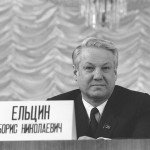
Clinton was obliged to provide the Russian government then $1.6 billion in compensation to help support Yeltsin’s reforms, and to make the Navy adopt a new strategy for the post Cold-War world whose rallying call was “preparing the battlefields” around the globe.
Instead of the Grayling’s collision becoming a severe setback for the service, it became its salvation when it came to missions and money.
While Navy leaders talked about the incident saving their bacon, it also opened up the whole world to submarine surveillance by Washington rather than phasing it out.
In addition, the Clinton administration agreed to build three new attack submarines rather than just one already agreed to.
“The Navy,” Sontag and Drew concluded, “even got the go-ahead to keep watching the Russians, albeit at this greatly reduced pace, as long as the reconnaissance was done more caustiously and judiciously.” (p. 380)
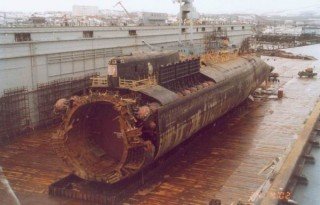
While this unanticipated disaster, undoubtedly caused by the Navy acting so surreptiously, soon made the departing President a dead duck.
Clark went on to become the second longest-serving CNO – only surpassed by Admiral Arleigh Burke – and he was seriously considered as the next Chairman of the Joint Chiefs after the 9/11 attacks.
It was just as well as Clark, the maker of the Kursk disaster, would have made the worst case scenario in world affairs as Chairman of the Joint Chiefs.
He believed in divine intervention when it came to international affairs, and he planned to become the President’s chief military adviser if he got the job, especially “…taking it to the enemy” (p. 59), as Bob Woodward recalled in State of Denial.
For example, Clark, as Clinton’s Chairman, would have made mincemeat out of Serbia when it came to its ethic cleansing in Kovoso. Clark, a seaman who had come up through the ranks, had nothing but contempt for previous Chairmen, almost all of whom had attended the service acadamies.
It’s easy to imagine that Clark would have made an even worse mess of the Middle East than Bush, SOD Don Rumsfeld, his deputy Paul Wolfowitz and Vice President Dick Cheney did by themselves if he had gotten the chance.
The NRO’s covert surprise had been the sinking of the area around Izmit, Turkey with a deadly earthquake early on the morning of August 17, 1999, just a year before the Kursk. It was Washington’s punishment of the extremely nationalistic government of Mustafa Ecevit for assisting Yugoslav President Slobodan Milosovic during NATO’s bombardment of Serbia because of its military occupation of Kosovo.
A Turkish spy in NATO had supplied the Serbians with its intended targets, resulting in such a drawn-out, needlessly destructive campaign.
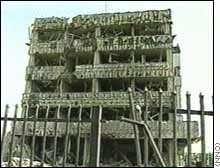
Clinton was so mad that he had the Chinese Embassy bombed when he learned that they were helping Milosevic too, and quahed a Chinese deal for Israeli aircraft after he learned that Tel Aviv had helped Belgarde in its crusade against indigenous Muslims.
The Izmit earthquake had a very beneficial effect upon Turkey, though, from the point of view of US strategic interests.
Ecevit, the Prime Minister who ordered the invasion of Cyprus, was the last guy Washington wanted running Turkish affairs, and the earthquake, given its human and infra-structure losses, put his government firmly on the road to ruin.
As if the numbers of citizens killed, injured, and made homeless was not enough, Ecevit called off the search effort too quickly, and simply bulldozed over the site in order to prevent an alleged epidemic.
While Ecevit held on doggedly to power for another two years, Izmit certainly started him on his way down, opening up the country to government by moderate Muslims – what Washington and London desperately wanted.

With this kind of achievement for gung-ho military operatives, it was hardly surprising that NRO Director Hall agreed to the new shoulder patch a year later, but it should never have been so graphic, especially since he had been so careful to play down, and cover up previous agency excesses.
He had gotten the position in 1997 in the wake of some exposure of its institutional and operational free-wheeling.
The NRO, whose very existence had only been officially acknowledged in September 1992, had built itself a cushy new headquarters at Chantilly, Virginia out funds it had accummulated over the years through congressional overfunding of projects which either cost less or were never completed.
When this was only partly exposed, the then Director Martin Faga and Deputy Director Jimmie D. Hill were obliged to vacate the premises.
Hall instituted a system of small contracts for vehicles and technology it wanted which were subjected to quarterly financial reviews so as to avoid unnecessary expenditures and delays, the source of congresssional complaints.
He envisioned the placing of broadly-based, integrated intelligence systems in space aka Future Imaging Architecture out of the specialized fields of space borne technology which cluttered the agency’s mission – what had resulted in the Keyhole-11 laser satellites not having much of a purpose until it was discovered that they could induce earthquakes in sandy terrains, especially if they had been opened up for penetration, especially by qanats.
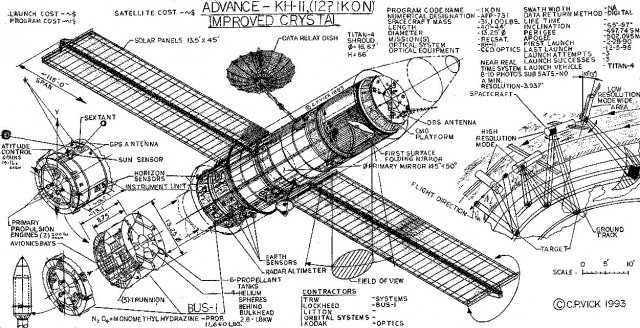
Hall also stopped in its tracks any release of information about really secret operations, especially their stealth capability. It took 16 years to surmount in most elementary ways, as Professor Jeffrey T. Richelson demonstrated when he only acknowledged that the NRO had finally come back “out of the black” in an article posted September 2008 – “Out of the Black: The Declassification of the NRO” – about its release of highly redacted documents about its existence and organization.
There was nothing about operations during the 1980s and 1990s when it was apparently causing earthquakes in Iran and Turkey, thanks to its laser and stealth capability.
The issue of “out of the black” concerned much more than just secrecy and non-disclosure; it also concerned the stealth character of the satellites, as the controversial shoulder patch displayed. One of the four space vehicles depicted upon it, circumventing the globe, was one embroidered in black, indicating that it had some power to hit back undisclosed if it wanted.

As for what that was, a scorpian disguised as merely an owl, with its deadly tail cocked to hit back, and hiding behind a protective mesh, left little doubt about its effectiveness. In sum, the shoulder patch said far more about the NRO than all the documents disclosed about it up to now.
Little wonder that Hall was soon in the dog house after the new Bush administration took office in January 2001 because of the shoulder patch adoption, especially since it had asked him to stay on as director, making him its longest serving one.
Hall had even received the Dr. Robert H. Goddard Memorial Trophy for 2000 by the National Space Club because of his achievements at the NRO, but it did not save him from the blowback over the patch.
Moreover, the NRO’s input when it came to counterterrorism – much like the FBI’s, once Robert Hanssen’s spying for the Soviets was discovered several months later, and just before the 9/11 attacks – proved too little, too late when the alleged highjackers turned out to be really suicide bombers.
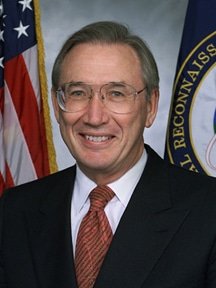
Hall, thanks to input by Deputy Director Dennis Fitzgerald who had just come over from George Tenet’s CIA, staged a mock test of an airplane crashing into its lush premises at the very time the actual bombings of the WTC and the Pentagon occurred, in the hope of showing other agencies just how ahead it was in the counterterrorism game.
When the disasters still occurred – thanks to CIA incompetence – they resulted in Hall’s own retirement in December. (For more on this, see my article, “The Prelude: US Intelligence – 11 September 2001,” Eye Spy, Issue Eight 2002, pp. 26-33.)
To keep the public confused about what had happened at the NRO, and what was now in the offing, the government staged a most bizarre reception for the new director, Peter B. Teets, at the Space Technology Hall of Fame Dinner the following April. Teets was a vigorous proponent for further weaponizing space.
The keynote speaker at the dinner – attended by all the leading military leaders of the Bush administration, including the President – was W. David Thompson, a one-time NRO employee, and founder, president, and ceo of Spectrum Astro which had designed a dozen high performance satellites for the NRO, and wereultimately bought by General Dynamics for over a billion dollars.
Thompson laced into the NRO in no uncertain terms, but the purpose of the speech was to provide the agency with a smoke-screen for what it would now have to do against Al-Qaeda and its Muslims supporters. “Over the past decade,” he announced,
“the NRO has posted a sorry decline into mediocrity and aristocracy. Today’s NRO is a rogue agency arrogant and holier than thou….The NRO staff is a know-it-all about everything. You’ve dealt with them – you can’t tell them anything. They already know far more than you do.”
Then Thompson compared the NRO facilities at its Taj Mahal, particularly its cafeteria, with those of the rest of the government, especially the President’s, and found them decidedly inferior. “I promise you it’s nicer than the White House cafeteria,” he complained, “but where are those revolutionary satellites that they promised us?”
Its slogan should be: “Buying Yesterday’s Technology at Tomorrow’s Prices” – unlike what the shoulder patch proudly pronounced: “We Own The Night.”
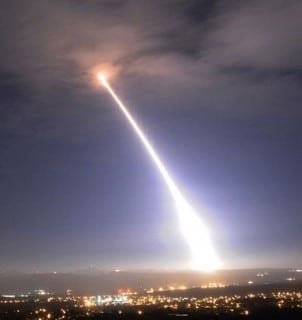
Thompson then mentioned all the failed launches and satellites, concluding with a call for the agency to fix itself under the new leadership of former Air Force Secretary and current Pentagon acquisitions chief Edward Aldridge, Director Teets, Deputy Director Fitzgerald et al.
Aldridge was in charge of the NRO during the Challenger fiasco, and Fitzgerald survived its 9/11 fiasco, indicating just how little things had really changed.
Under the circumstances, one must conclude that this was mostly eyewash and an earfull to confuse the uninformed public.
How could NRO’s 3,000 allegedly spoiled, unproductive workers cure themselves? Then how could things have been so bad if Thompson had been so productive, and profitable in making satelllites for it?
Most important, how could the NRO have been allowed to advertise itself with apparently such a false shoulder patch, announcing it controlled the skies, especially during the night when no one expected anything?
![KeyholeSat_real photo]](https://www.veteranstodayarchives.com/wp-content/uploads/2011/09/KeyholeSat_real-photo-640x414.jpg)
Thompson’s speech was an officially promoted effort to give the agency time to do its dirty work in the war on terror while no one outside the most covert parts of the American government still thought it capable of much.
The NRO was seriously called into the intelligence war against Al-Qaeda until the ouster of the Talaban and Saddam were completed, giving it time to improve its Misty satellites which combined deployable decoys, radar, stealth cloaking, and mission specific packages, particularly various kinds of lasers, in vehicles so heavy that they sometimes proved too heavy for their rockets to safely launch.

The lasers in the Misty buses could weigh up to 10 tons., and provide beams of up to several million watts for tiny lengths of a second. For what kind of lasers they contained, see this link: Knocking Down Misty Satellite Least Dangerous Option
While this was going on, SOD Rumsfeld strengthened his hold on the preemptive capacity of the Pentagon.
He appointed crony Stephen Cambone a new undersecretary in charge of coordinating the activities of the NRO with those of the NSA, the National imagery and Mapping Agency, and the Defense Intelligence Agency.
The goal was to make sure that future operations were not restrained by any niceites regarding means and ends that the CIA called for – what had led to the 9/11 disasters.
Furthermore, at the National Space Symposium at Colorado Springs in April 2003, Air Force Secretary James Roche, Teets’ official boss, stated that the United States would deny any country, even allies, use of space for intelligence purposes.
“If allies don’t like the new paradigm,” Roche said, “they’ll just have to learn to accept it.” (Quoted from Chalmers Johnson, The Sorrows of Empire, p. 311.)
Washington demonstrated what it had in mind for enemies who questioned its military unilateralism when Iran’s mullahs were suspected of stoking up the chaos in Iraq, and hoping to take strategic advantage of it – what threatened to become an utter fiasco if its Shias joined a nuclear-armed Iran.
The interim Prime Minister was Ibrahim al-Jafari, a Shiite who suited Bremer’s plans to exclude the defeated Sunnis as much as possible from power.
“The outcome,” Noam Chomsky wrote in Failed States, “could be a loose Shiite-dominated alliance comprising Iraq, Iran, and the oil regions of Saudi Arabia, independent of Washington and controlling the bulk of the world’s energy resources.” (p. 145)
![2003_Bam_earthquake[1]](https://www.veteranstodayarchives.com/wp-content/uploads/2011/09/2003_Bam_earthquake1-150x150.gif)
Bam had a vast underground collection system of water, including many deep wells, and 341 qanats to irrigate its fields of date palms, and supply water to its 100,000 residents.
About 40,000 of them were killed in the airborne-caused earthquake, and another 30,000 injured. Its ancient citadel, its source of tourism, and a UNESCO treasure, was totally destroyed in the disasster.
Chinese chemist and earthquake investigator Professor Zhonghao Shou, who the American government had coopted to California, and made an American citizen in order to limit his alarming activities, had used his Earthquake Vapor Theory – based upon what had happened in Izmit in 1999 -to predict the Bam disaster the day before it happened.
He based his prediction upon the vapor cloud which was rising from Bam, thanks to the heat that the Misty beams were causing to its underground reservoirs.
To minimize his potential impact upon the Iranian authorities, Washington offered generous aid to Tehran in return for its allowing inspectors from the International Atomic Energy Agency (IAEA) to inspect its continuing, controversial atomic development.

The mullahs reneged on their promises about letting the IAEA inspectors do their work – apparently thanks in part to Shou’s disturbing claims about what most likely caused the earthquake in a region not known for either earth plates rubbing together or volcanoes erupting to cause the necessary heat.
The Pentagon, it seems, attacked Iran again two months later to punish this player of the alleged ‘axis of evil’.
At the other end of the country, more Misty beams caused another slight earthquake at 4 a.m. local time in Neyshabur, causing 17 train cars loaded with sulphur, petrol and ferilisizer to break loose from its station, and derail 12 miles down the line, resulting in terrible fires and explosions which killed about 300 people.
Two months later, it was North Korea’s turn to get similar treatment, though this time it had included a plot to kill its leader Kim Jong-ii – who was returning from Beijing after a discussion with the Chinese leadership about its nuclear ambitions – which had been scrubbed at the last minute because of another devastating attack early in the moring of April 23rd would have been just too coincidental for comfort.
![Korea_Train_From_Hell[1]](https://www.veteranstodayarchives.com/wp-content/uploads/2011/09/Korea_Train_From_Hell1-320x239.jpg)
The disaster killed several hundred North Koreans, injured 1,200, and destroyed or damaged more than 8,000 homes.
These attacks seemed just what the doctor in Washington ordered when almost everyone was predicting that it was bound to have more preventive wars with Iran and North Korea, especially since the March 2002 Nuclear Posture Review had identified them “…as potential targets for nuclear weapons.”
As Johnson reminded us, “and it laid out plans to build a nuclear ‘robust earth penetrator’ as well a new plant to manufacture nuclear weapons, a new interncontinental ballistic imissile, a new submarine-launched missile, and a new bomber.” (Quoted from p. 290.)
As usual, Washington was just pouring out more deceptions about what it was actually up to, as we shall see in spades in the next article.


Trowbridge Ford (1929 – 2021) was the son of William Wallace Ford, the father of the US Army’s Grasshoppers.
He attended Phillips Exeter Academy, and Columbia University where he received a Ph.D. in political science after a stint in the Army’s Counter Intelligence Corps as a draftee during the Korean War, and after being discharged, worked as the sports editor and a reporter for the now-defunct Raleigh Times.
Thought academia was the thing for him. He was quite satisfied teaching all kinds of courses about European and American politics while writing his dissertation about an under-appreciated British politician, Henry Brougham, who became the Lord Chancellor of the famous Reform Government (1830-34).
At the same time, Trowbridge became most interested in the role that A. V. Dicey, a famous Oxford legal professor, played in settling the Irish question – another figure that historians didn’t think did much about. It was while he was doing research on the dissertation at the British Museum in London that President Kennedy was assassinated, and it slowly led him to take a dimmer view of academic life, especially when joined by campus protests over the growing Vietnam War. He was fired by two institutions of higher learning because of his protests against the war.
When the Vietnam War finally ended, he got involved in researching the Dallas assassination, and his first serious efforts about it appeared in Tom Valentine’s The National Exchange in 1978 – what Fletcher Prouty thought was quite good, just urging him to go higher in the Agency and the political world for the main culprits.
He slowly started doing this, ultimately deciding to retire early in 1986, planning on finishing his Brougham biography while living in Portugal. While he did this, he had made too many enemies with the White House not to be punished – first by attempts to establish that he maliciously tried to destroy Richard Nixon during Watergate by libeling him, and when he died, DCI George Tenet tried to have me killed by poisoning – what would make his death look like a suicide or a natural one.
As a result of this, once he had finally determined the cause, he moved to Sweden to not only save his skin but also investigate and write about assassinations, covert operations, ‘false flag’ deceptions, preventive wars, weapons development, and their use, etc. He passed away in 2021.
ATTENTION READERS
We See The World From All Sides and Want YOU To Be Fully InformedIn fact, intentional disinformation is a disgraceful scourge in media today. So to assuage any possible errant incorrect information posted herein, we strongly encourage you to seek corroboration from other non-VT sources before forming an educated opinion.
About VT - Policies & Disclosures - Comment Policy



